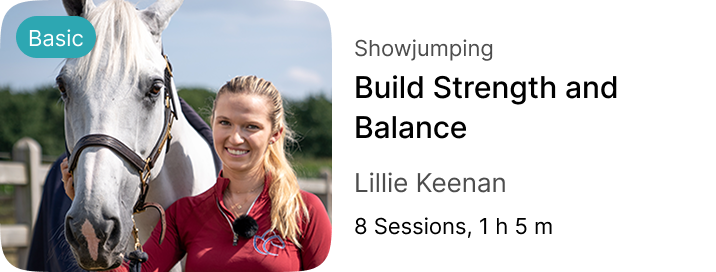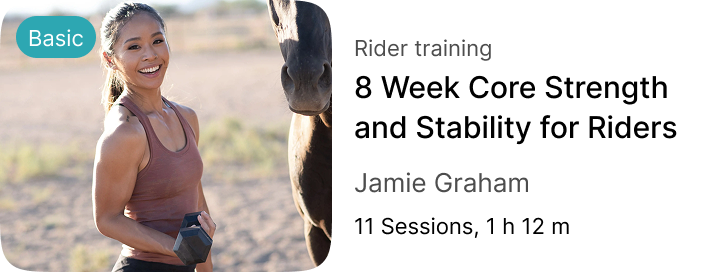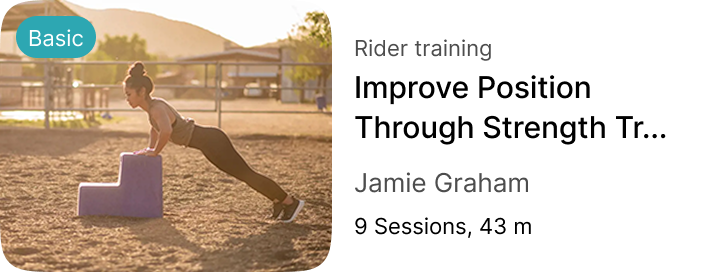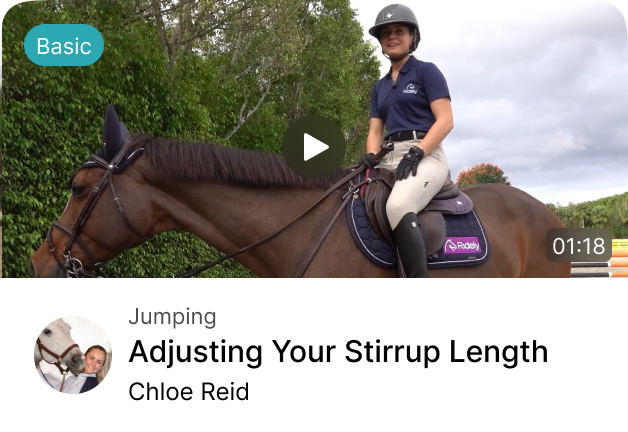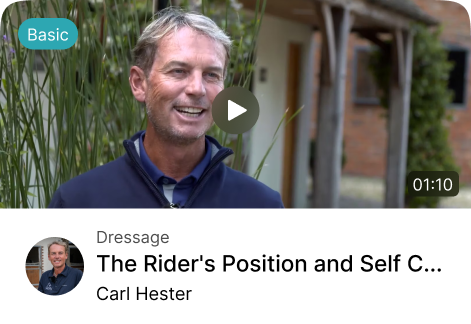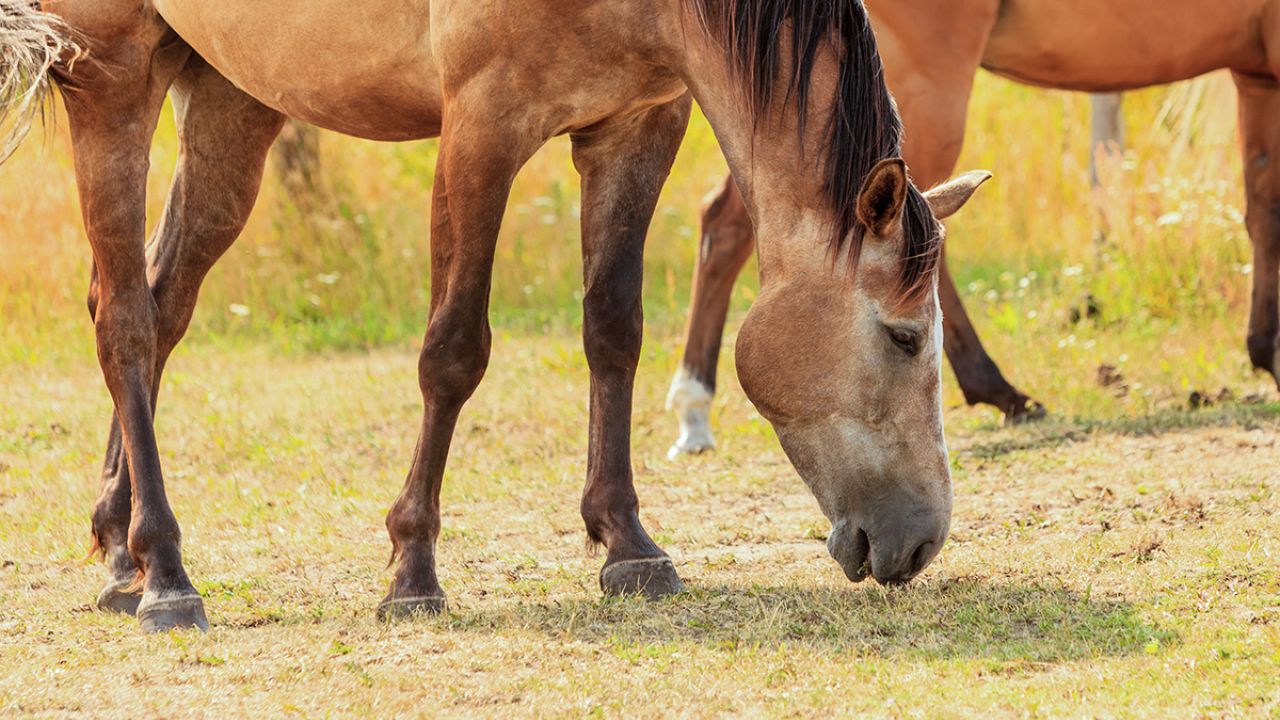Your Top 10 Burning Questions About Rider Position, Answered!
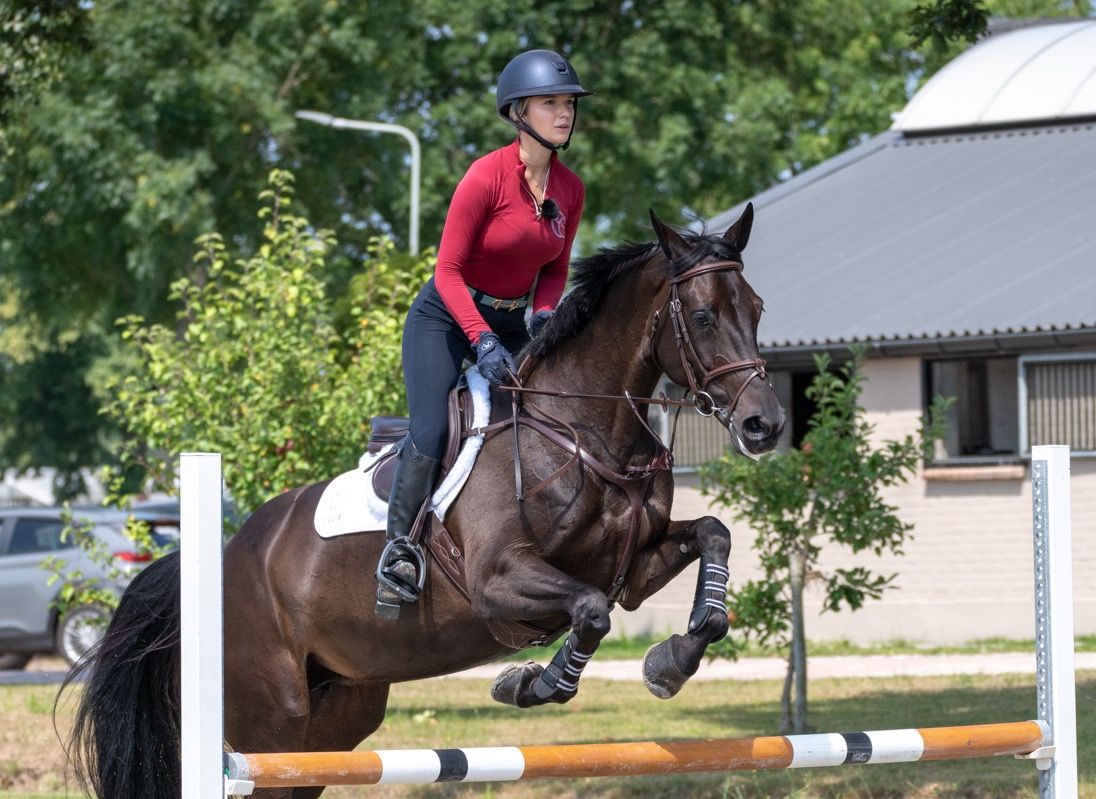
Whether you’re a seasoned rider or just starting out, maintaining a strong, stable position in the saddle can be a challenge. Below, we tackle some of the most common questions riders have asked Ridely’s AI Coach about leg position, stability, and overall posture. Let’s jump in!
1. How Can I Get a More Stable Leg?
Achieving a stable leg starts with your base – your core and your stirrups. A great place to start is to ensure your stirrups are the correct length; too long or too short can throw off your balance.
Mary Wanless (Founder – Ride with Your Mind, Rider Biomechanics) emphasizes in her article with horsemagazine.com the importance of thigh engagement for a stable leg position in riding. She advises riders to avoid pushing down into the stirrups, which can lead to counterbalancing on the reins. Instead, she suggests balancing over the stirrup to maintain stability.
To improve leg stability, focusing on core strength is crucial. Engaging the core helps maintain balance and prevents reliance on the reins for stability. Practicing exercises off the horse, such as planks or Pilates, can enhance core stability, leading to a more secure leg position during riding.
2. How Can I Improve My 2-Point Position?
A better 2-point position starts with strong legs and a balanced upper body. Practice engaging your calves without pinching with your knees, and keep your hips slightly back. A common mistake is leaning too far forward; instead, think about creating a straight line from your head to your heels. Exercises such as riding without stirrups can help build the strength needed for a solid 2-point position.
3. How Do I Keep My Heels Down?
Keeping your heels down is about more than pushing them; it’s all about balance. Relax your ankle joints and think about allowing your weight to flow into your heels rather than forcing them down. Regular stretching, particularly of your calves and Achilles tendons, can make this easier.
If you push your heels down too forcefully, your legs can become stiff, and your seat may lift unintentionally. Instead of forcing the position, focus on allowing your weight to sink naturally through your thighs and into your feet.
Creating a Stable Leg Position:
• Engage your thighs for stability – Rather than sinking heavily into the saddle or pressing down into the stirrups, use your thighs to create a secure and balanced base. Think of them as gently wrapping around the horse rather than gripping.
• Avoid brace in the stirrups – Pushing down too much can cause your legs to shoot forward, creating tension in your ankles and knees. Instead, let your weight settle evenly, allowing your joints to stay soft and responsive.
• Distribute your weight – Your seat should stay in contact with the saddle, but not take all your weight. Engaging your core and thighs helps prevent you from collapsing down or stiffening against the stirrups.
Exercises to Improve Stability:
• Stand in the stirrups at a walk – Helps you develop balance without depending on the stirrups for support.
• Stretch your calves and Achilles tendons – Tight muscles in these areas can make it harder to allow your heels to drop naturally.
The goal isn’t just to push your heels down – it’s to create a strong, supple leg that absorbs movement without tension. Keeping your weight in your thighs rather than pressing into the stirrups helps maintain a secure and effective position.
4. How Do I Keep My Leg Still in the Dressage Saddle?
A quiet leg in the dressage saddle requires a deep seat and supple hips. Focus on sitting tall and allowing your pelvis to absorb the horse’s movement. Engaging your core helps stabilize your position, while riding without stirrups can improve your leg’s steadiness over time. You can find more tips specific to dressage position in this article.
5. How Do I Get a Stable Lower Leg When Riding?
The key to a stable lower leg is building strength and flexibility in your legs. Practicing exercises like sitting trot without your stirrups can help with improving strength and feel. Remember to avoid gripping with your knees, as this can cause instability and confusion for your horse. Instead, let your thighs relax and your weight sink down your thighs and into your heels.
6. How Can I Get a Better Leg Position When Jumping?
For better leg position when jumping, ensure your stirrups are at an appropriate jumping length, typically shorter than for flatwork. Keep your lower leg firmly against the horse’s side without pinching with your knees. Maintaining a secure contact with your horse’s barrel helps you stay balanced over the jump. Lillie Keenan has a fantastic training program in Ridely called ‘Build Strength and Balance‘, this program really focuses on helping riders to improve their jumping position and strength through a range of curated exercises.
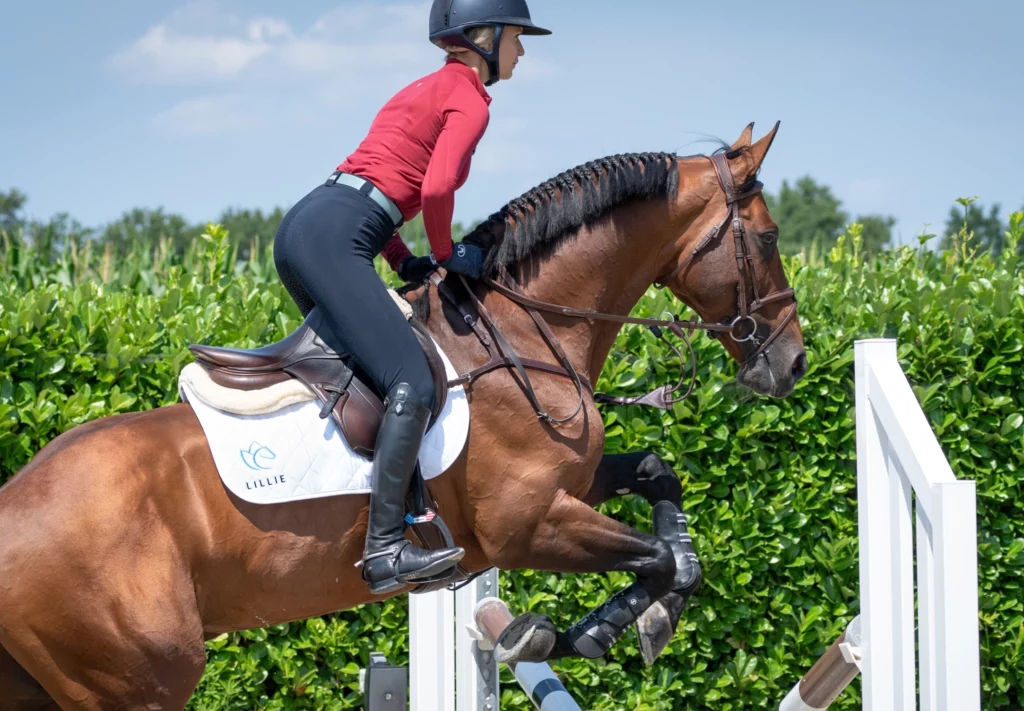
7. I’m Having Trouble Keeping My Heels Down When Jumping. What Can I Do?
If your heels pop up over jumps, it’s often a sign of tension or uneven weight distribution. Practice jumping grids to help you focus on your position without worrying about distances. Off-horse exercises, such as calf raises and ankle stretches, can also help develop the flexibility needed to keep your heels down.
8. What’s the Best Way to Maintain Leg Position in Canter?
To keep your leg steady in canter, avoid gripping with your knees and instead engage your thighs and calves. Your calves should rest gently against the horse’s sides without excessive tension. Think about following the horse’s motion with your hips while keeping your upper body relaxed. Riding without stirrups in canter is an excellent exercise to improve your balance and leg position – but only if you can maintain your balance without gripping. You can also practice light seat work, where you slightly lift your seat while keeping your weight distributed through your thighs, to refine your control and position.
10. I’m Losing My Stirrups. Help!
If you frequently lose your stirrups, focus on deepening your seat and stabilizing your lower leg. Shortening your stirrups slightly can provide more support. Exercises like standing in your stirrups at a walk or trot can also improve your grip, balance and confidence with your position.
However, rather than relying on shorter stirrups as a quick fix, work on improving your overall stability with these exercises:
Standing in the stirrups at walk and trot
Helps you develop balance and leg independence.
Riding without stirrups
Strengthens your seat connection and improves weight distribution.
Checking your alignment
If your heels creep up, it may indicate that your weight isn’t flowing correctly. Aim for your thighs to support most of your weight while your lower leg stays soft and in contact with the horse.
The goal isn’t to grip for security but to create a strong foundation where your legs stay in place naturally.
If you’re losing your stirrups, the issue isn’t necessarily your feet – it’s how you’re using your body weight. Rather than pushing down into the stirrups or gripping with your knees, focus on engaging your thighs and core to create a stable base.
Training Program Recommendations
Lillie Keenan’s ‘Building Strength and Balance’ : A training program focused on helping riders and horses of all levels and abilities improver their position, stability and strength, specifically while jumping.
Jamie Grahams ‘8 Week Core Strength and Stability for Riders’ and ‘Improve Position Through Strength Training’: Both of these programs focus on exercises and movement off the horse that will support you in the saddle. Jamie explains how the exercises will help your position, strength and how this impacts you riding in the saddle.
Video Recommendations
Chloe Reid shares her tips on stirrup length in her video ‘Adjusting Your Stirrup Length’ explaining how your stirrup length affects body control and balance as well as how you can adjust your stirrups to maximise your performance.
If you are into Dressage more than Jumping, both Carl Hester and Gareth Hughes also share their hot tips on how to improve your position. Check out Carl’s video ‘The Rider’s Position and Self Carriage’ and Gareth’s video ‘How to Establish a Correct Riding Position’.
By focusing on these tips and incorporating different exercises into your routine, you can improve your position and enjoy a more secure, effective ride. Remember, consistency is key, and small adjustments over time will lead to significant improvements. Ridely is home to hundreds of videos with expert trainers, ready to help you succeed and improve your riding.

- Train with 10+ Olympians from home.
- Learn and make the most of your equestrian life.

Learn from Carl Hester in Ridely!
Exclusive training videos with top trainers and riders like Carl Hester are available in the Ridely library. Don’t miss out!
